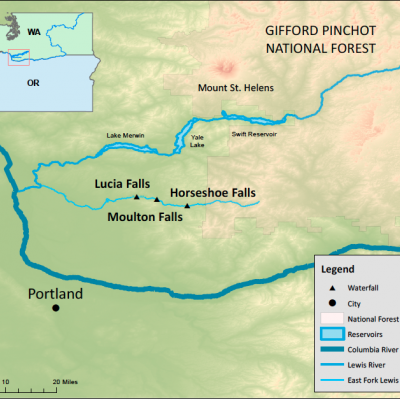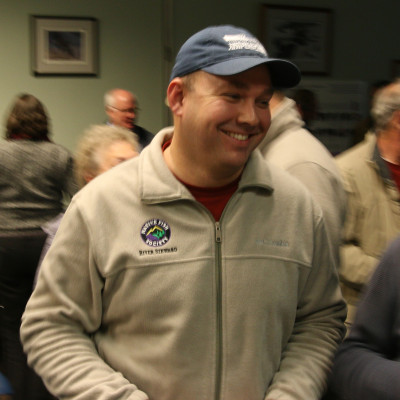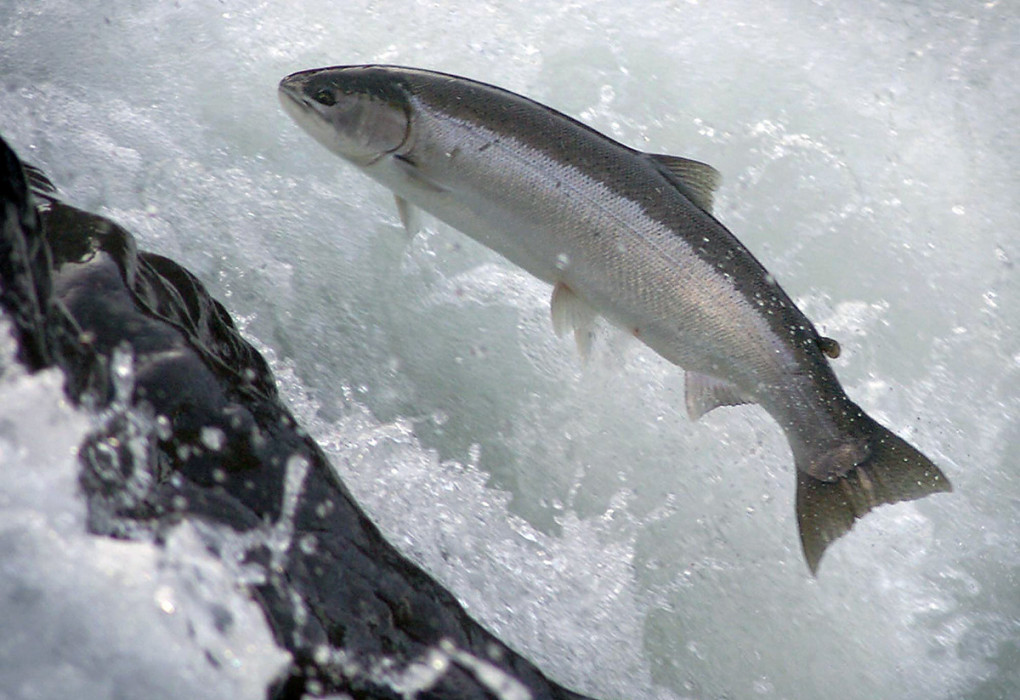Wild Steelhead Protection
Life in a WDFW Wild Steelhead Gene Bank Work Group or How We Learned To Love the Science & Put the Recovery of Wild Fish First
“Steelhead management shall place the highest priority on the protection of wild steelhead stocks to maintain and restore stocks to healthy levels.”
— Washington Department of Fish and Wildlife (WDFW)
Over the past several months, I have been representing the wild steelhead of Southwest Washington as a member of the most recent WDFW work group tasked with designating a Lower Columbia River tributary as a wild steelhead gene bank. As a relatively new Native Fish Society River Steward on the Washougal River, my initial goal was to do what I could to help build on the protections brokered by Peter Donahower in the previous WDFW work group in the Columbia River Gorge, where the wild summer steelhead run on Wind River was named as an official gene bank.
Peter is the NFS’s Mid-Columbia River Steward Regional Coordinator, one of my dearest friends, and the wild steelhead fanatic who originally roped me into this whole process by having me sit in for him when he couldn’t attend a meeting of that previous work group. For me, that first work group meeting was a bit like peeking behind the curtain of the Great and Powerful Oz.
Up until that point, I honestly looked at the state of wild steelhead management in the Pacific Northwest and sadly lamented the inevitable decline of these majestic fish. The problems facing Oncorhynchus mykiss seem daunting — declining wild stocks, hatchery introgression, habitat degradation, hydroelectric dams everywhere you look, poor ocean survival, and a gauntlet of nets up and down the Columbia River, to mention just a few. We live with the reality that five of Washington’s seven distinct population segments of wild O. mykiss are federally listed under the Endangered Species Act. Clearly, and by WDFW’s own admission, more than 70 years of wild steelhead “conservation” efforts have not returned the state’s wild steelhead stocks anywhere near their historic numbers.
Having a peek behind the curtain, however, revealed to me the exciting possibility that WDFW is finally beginning to face up to the decades of research confirming the negative impact hatchery steelhead have on wild stocks. Along with increasing pressure from conservation groups and an insistence from the National Marine Fisheries Service (NMFS) that states begin to reduce hatchery impacts on threatened stocks of wild fish, it appears we are finally beginning to see the early stages of a paradigm shift in the management of steelhead fisheries in the Pacific Northwest.
And so, when WDFW was set to convene a new work group to tackle choosing a gene bank stock from rivers in the southern end of the Cascade Stratum — the North Fork Lewis River, the East Fork Lewis River, the Washougal River and Salmon Creek — I was ready to get to work. Attending the initial public meeting to discuss the formation of and rationale for the new work group, it became immediately clear that if choosing the Wind River as a gene bank was a skirmish, this new work group was going to be more like Gettysburg. I am in no way trying to diminish the valuable work done on the Wind River, but hatchery operations ceased on the Wind River in 1997. With no on-site hatchery, no hatchery plants, and the Wind already being managed as a Wild Steelhead Sanctuary, it was a fairly logical choice among the rivers in the area.
The Southwest Washington streams below Bonneville, however, have been consistently loaded with hatchery fish for decades. Even those of you not familiar with the Washougal River have probably heard of the famed Skamania Hatchery on the banks of the Washougal’s North Fork. The Skamania strain of hatchery fish have infiltrated rivers not only throughout the Pacific Northwest, they were also a major contributing stock used to introduce steelhead to the Great Lakes. Naming the Washougal as a gene bank would require the elimination of this juggernaut of a hatchery — an uphill battle for sure.
Of the other rivers on the table as possible gene banks with this work group, two almost immediately fell away from consideration. The North Fork Lewis River had just been through the federal relicensing process for its 510 megawatt, three-dam hydroelectric project, including a detailed plan to allow for anadromous fish migration past the dams. Since nothing we decided in the work group was going to preempt the feds, the North Fork was off the table.
The smallest of the four rivers in consideration, Salmon Creek, did not meet the minimum abundance and productivity requirements to be considered as a gene bank and was eliminated almost immediately from discussions. It seemed we were down to the East Fork Lewis as the only viable option.
Since the previous Cascade Stratum work group had already recommended gene bank status for the North Fork Toutle/Green River winter run, discussions about the East Fork Lewis were initially focused on designating only the summer run as a gene bank, and even then, only the portion of the river above the barrier at Horseshoe Falls. People from all sides of the issues at hand were passionate and opinionated. Tensions were high within the group at times, but then something very unexpected happened. As the pro-hatchery vitriol in the public seemed to increase, people inside the group became more moderate. After roughly thirty hours of meetings, compromises were made, minds were opened, and when all was said and done, the inescapable need to protect these fish prevailed.
With the help of fellow wild fish advocates from groups such as the Clark-Skamania Flyfishers, the Wild Steelhead Coalition, and Northwest Wild Fish Rescue, we were ultimately able to persuade the group to name the entire East Fork Lewis as a gene bank river for both the winter and summer runs, eliminating all hatchery steelhead plants. With the exception of a small chum salmon reintroduction program, I am very pleased to report that the East Fork Lewis will be a completely wild salmonid stream for the first time since 1954. Additional protections will also remain for the upper reaches of the Washougal River, which will continue to be managed as a Wild Steelhead Sanctuary.
While all of this is great news, what the future truly holds for these gene bank rivers remains to be seen. Although the gene banks are a wonderfully positive step toward recovery, or at the very least protection, of wild steelhead in the Northwest, we can’t afford to revel in this victory for too long. The wild fish in the East Fork Lewis, the North Fork Toutle/Green Rivers, and the Wind River are beset on all sides by hatchery strays, militant pro-hatchery angling groups, and state policy makers uninterested in the long-term benefits of wild fish recovery. We must remain vigilant in our support of and our advocacy for wild fish.




